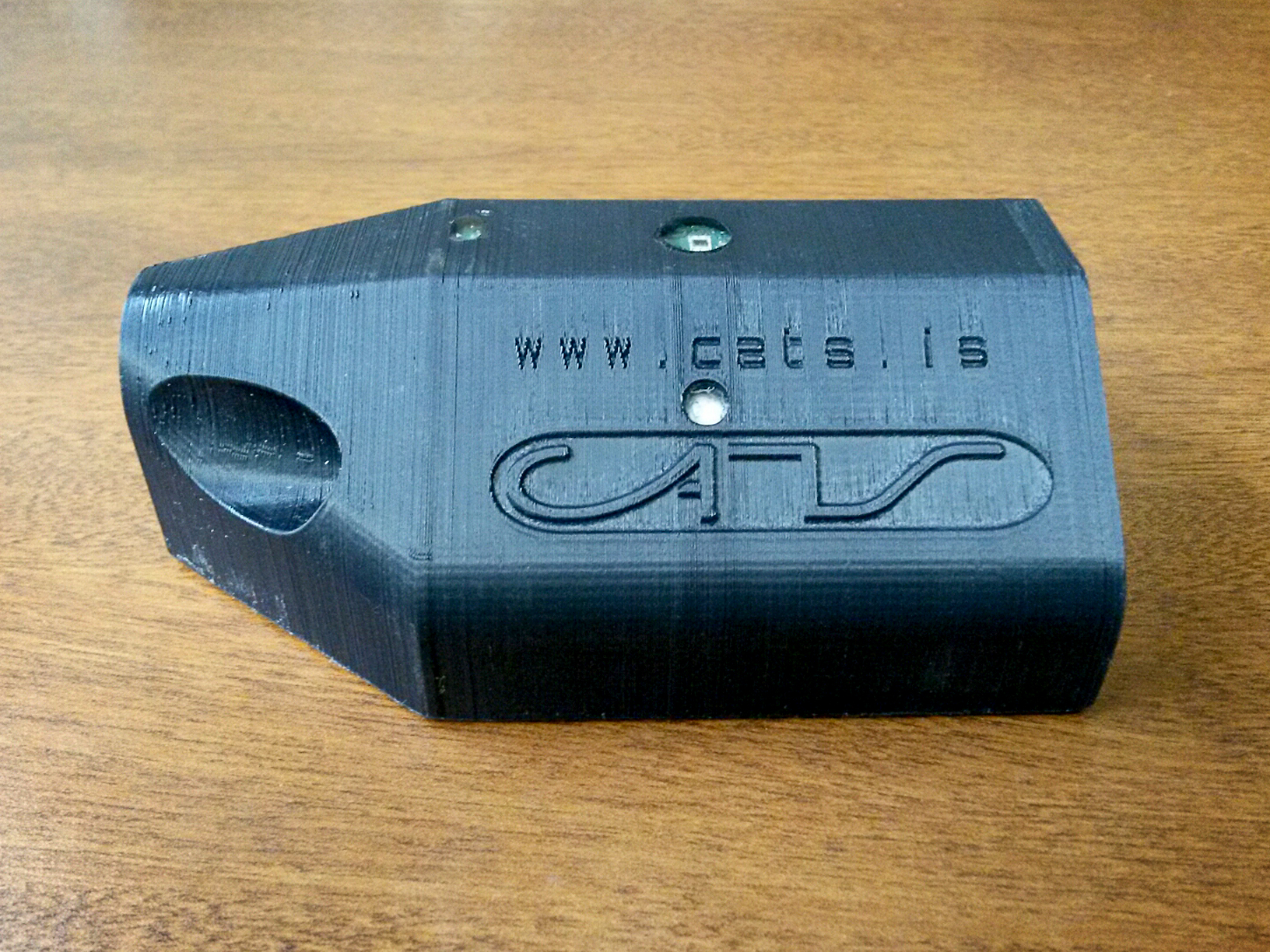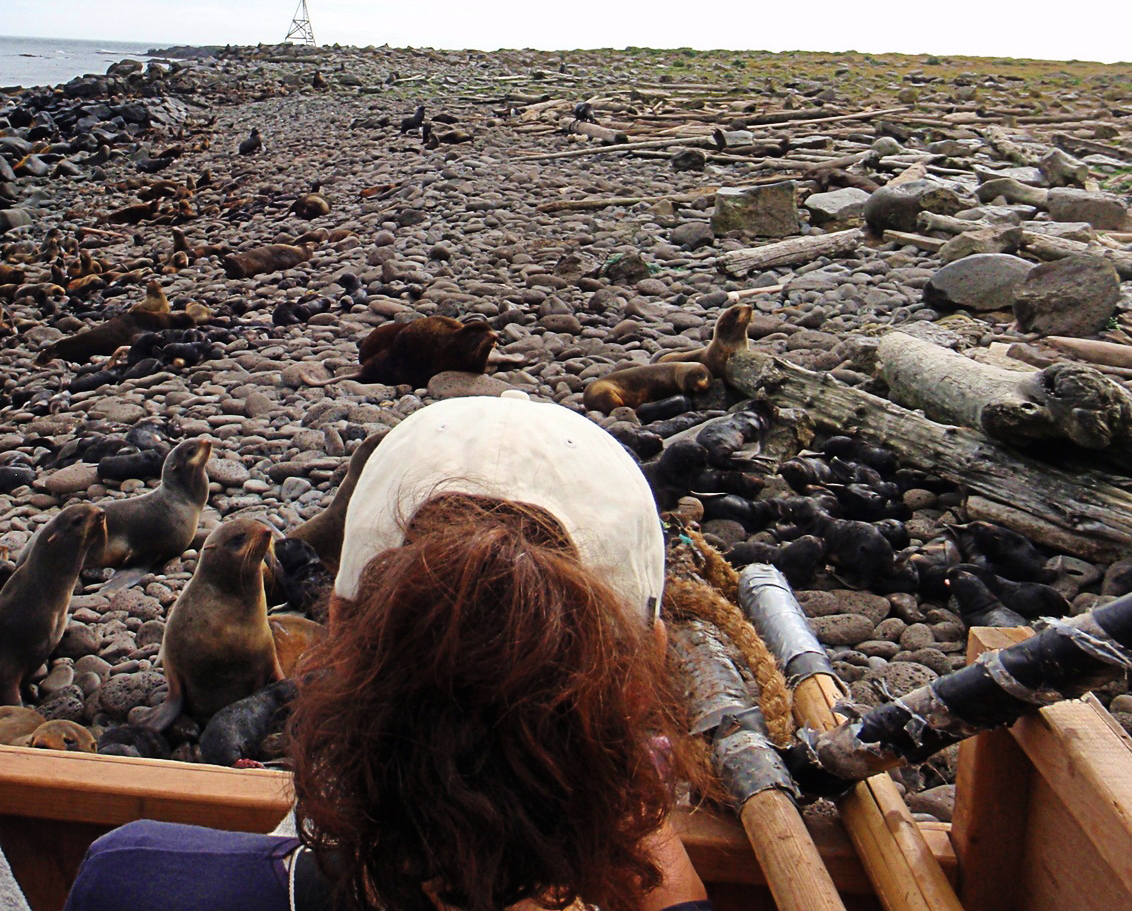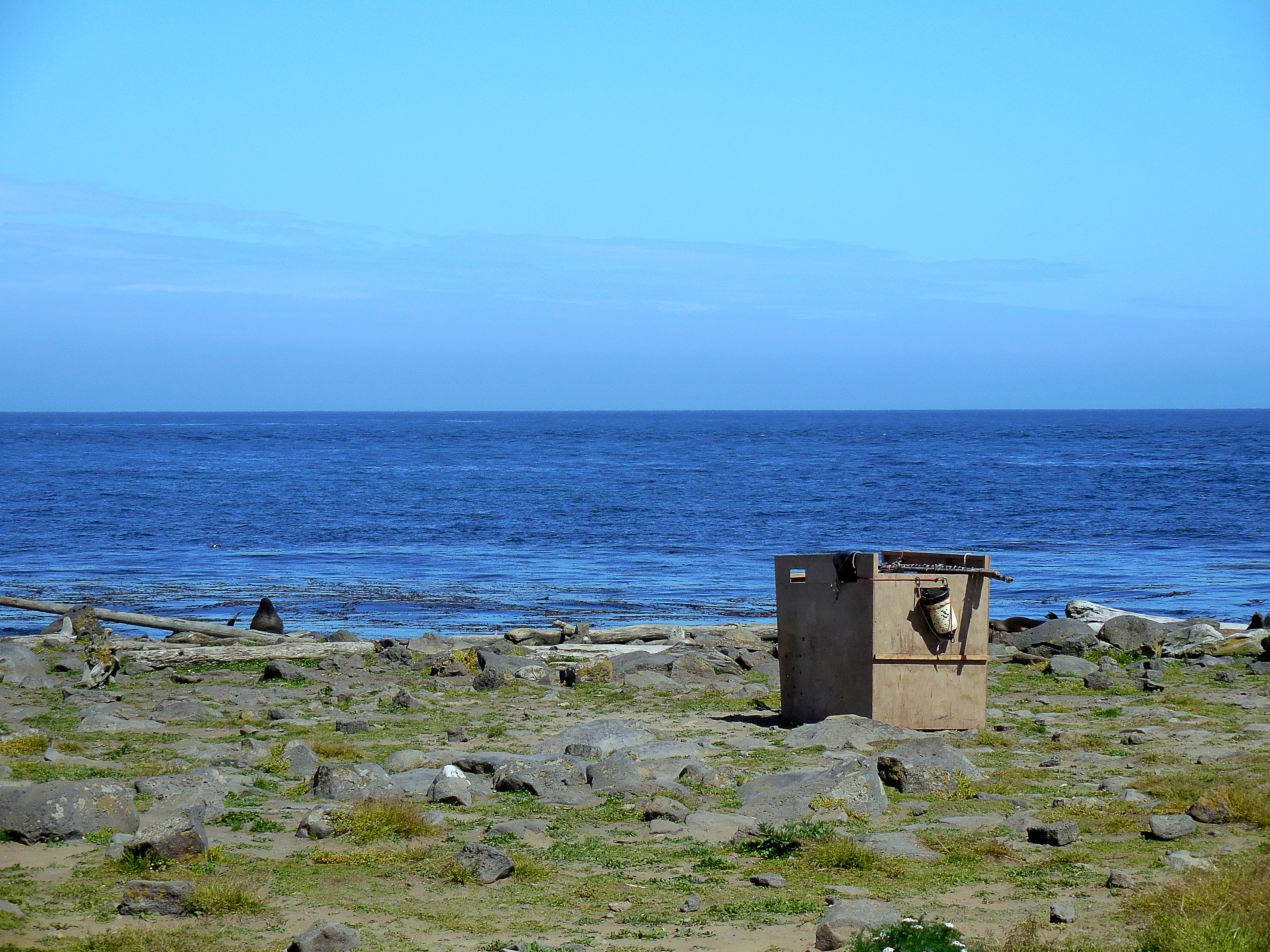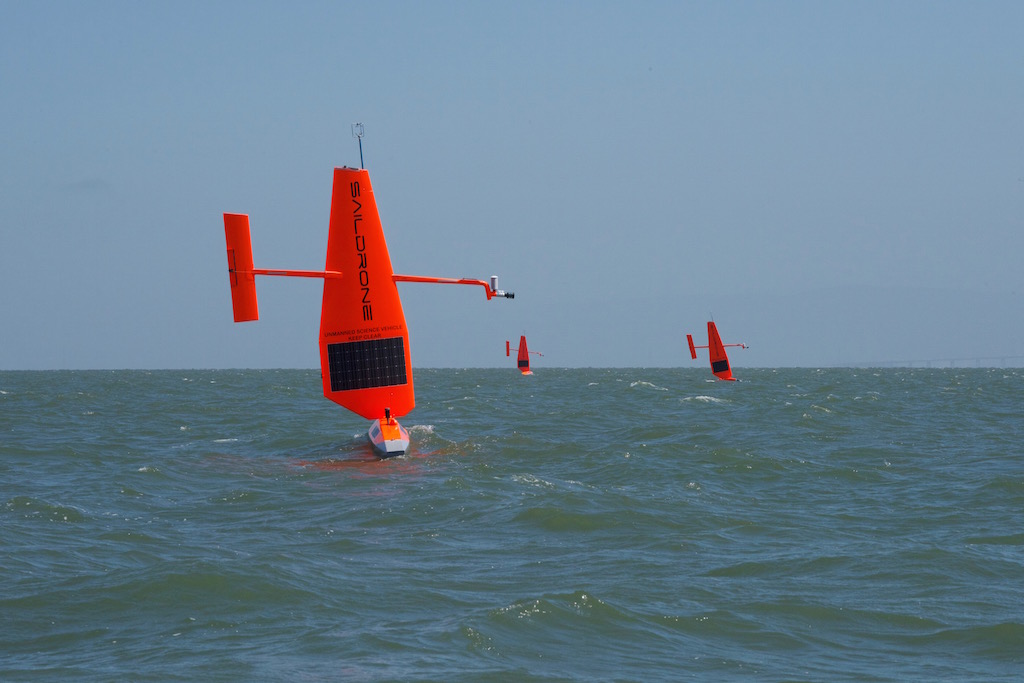The Alaska Fisheries Science Center is back for a second year of tracking northern fur seals on St. Paul Island and measuring prey availability in the northern fur seals feeding area. Continuing this work is a fantastic opportunity that will help build on what the team learned in 2016.
Similar to last year, their plan is to equip adult female fur seals with satellite tracking instruments to measure at-sea behavior from July until September. The team will also capture each females’ pup to measure growth over the summer and link this information to the mom’s foraging success. This year, only one Saildrone will be used for the study, but the still hopes to cover the entire fur seal feeding range measuring walleye pollock abundance and distribution.
 State of the art camera technology being used for the first time in northern fur seal tagging study. Photo credit: NOAA Fisheries.
State of the art camera technology being used for the first time in northern fur seal tagging study. Photo credit: NOAA Fisheries.
New technology: custom video camera tags
The team is using new, state-of-the-art camera tags. These instruments record high-definition video, which will allow them to take a trip to sea from the point of view of a fur seal and record each time they feed. They’ll be able to see the fur seals trying to catch fish, confirm the species of fish, and estimate the age or size of the fish.
By linking the video data with the Saildrones echosounder data the team can determine if feeding rates vary relative to the amount of fish that’s available. They’ll also be able to estimate foraging success based on the amount of effort a fur seal expends during each trip in relation to the amount of food consumed.
Using video cameras on marine mammals isn’t new but these are customized tags. They are significantly smaller than past video camera tags and have enough battery power to potentially record underwater activity during an entire foraging trip (3 to 5 days).
 Observing fur seals requires that scientists are stealth. Researcher Carey Kuhn in an observation box from previous field season. Photo credit: NOAA Fisheries.
Observing fur seals requires that scientists are stealth. Researcher Carey Kuhn in an observation box from previous field season. Photo credit: NOAA Fisheries.
On St. Paul Island, scientist begin tagging northern fur seals
On St. Paul Island, the scientist managed work to place tracking instruments on northern fur seals. Just like 2016, the work is being done on the northeast side of the island. By using the same tagging location, the team will be able to compare years to look for a difference in both fur seal behavior and walleye pollock distribution.
Even though the team is working at the same place, every year things are a bit different. All males are defending their harems (groups of females) from other male intruders. Capturing a female to collect biological data and attach a tracking instrument is always challenging. Each female responds to the capture box differently and so do the males. Some are more protective then others.
As with most research projects, observation is key. The team spent much of the first day assessing the fur seal harems (location, size, female age distribution), learning the harem boundaries, and getting to know the personalities of the harem males. The identified the males that will allow the team to set up at their harem boundary and safely capture the females the team needs to instrument. The team also had the opportunity to observe a number of births as pregnant females are arriving on the rookery daily.
 To protect themselves from potentially aggressive males, researchers tag and collect biological information from female fur seals inside boxes like this when on the rookeries. Photo credit: NOAA Fisheries.
To protect themselves from potentially aggressive males, researchers tag and collect biological information from female fur seals inside boxes like this when on the rookeries. Photo credit: NOAA Fisheries.
Saildrones expected to arrive in early August
The Saildrone was launched from Dutch Harbor, Alaska on July 16th and is currently making its way north to measure walleye pollock abundance and distribution east of St. Matthews Island. These data will be used to determine if future walleye pollock surveys need to be extended into this region.
The Saildrone will head to the fur seal foraging area around the second week of August and will survey this area for almost three weeks. The team will use the real-time location data from the fur seals to adjust our survey plan to best fit the foraging area the fur seals are using this year.
Over the next few days, the team will finish deploying the fur seal tracking instruments and then head back to Seattle. Although the deployment process is a bit slower this year, they believe they we’ll be able to get out all 16 instruments before it’s time to leave.
From Seattle, the team will spend the next month monitoring the data as they come in. Click here to follow Saildrone Mission 2017.
 Three saildrone launched from Dutch Harbor, Alaska on 18 July 2017. One will assist the fur seal project on St. Paul Island. Photo credit: Pacific Marine Environmental Laboratory.
Three saildrone launched from Dutch Harbor, Alaska on 18 July 2017. One will assist the fur seal project on St. Paul Island. Photo credit: Pacific Marine Environmental Laboratory.
Want to know more about last year’s mission?
Check out this YouTube Video.
Visit NOAA Research’s Pacific Marine Environmental Laboratory’s Innovative Technology for Arctic Exploration website. They will be sharing live feeds from this year’s mission to study fur seals, ocean conditions in the Bering Sea and the Arctic and search for critically endangered North Pacific right whales.
Want to know more about this year’s mission?
Read more about this year's planned mission on the NOAA Research webpage.
By: Carey Kuhn, Ecologist at the Alaska Fisheries Science Center’s Marine Mammal Laboratory.



